Abstract
K+ and Na+ fluxes and ion content have been studied in roots of Atriplex nummularia Lindl. and Avena sativa L. cv Goodfield grown in 3 millimolar K+ with or without 3 or 50 millimolar NaCl. Compartmental analysis was carried out with entire root systems under steady-state conditions.
Increasing ambient Na+ concentrations from 0 to 50 millimolar altered K+, in Atriplex, as follows: slightly decreased the cytoplasmic content (Qc), the vacuolar content (Qv), and the plasma membrane influx and efflux. Xylem transport for K+ decreased by 63% in Atriplex. For oat roots, similar increases in Na+ altered K+ parameters as follows: plasma membrane influx and efflux decreased by about 80%. Qc decreased by 65%, and xylem transport decreased by 91%. No change, however, was observed in Qv for K+. Increasing ambient Na+ resulted in higher (3 to 5-fold) Na+ fluxes across the plasma membrane and in Qc of both species. In Atriplex, Na+ fluxes across the tonoplast and Qv increased as external Na+ was increased. In oat, however, no significant change was observed in Na+ flux across the tonoplast or in Qv as external Na+ was increased. In oat roots, Na+ reduced K+ uptake markedly; in Atriplex, this was not as pronounced. However, even at high Na+ levels, the influx transport system at the plasma membrane of both species preferred K+ over Na+.
Based upon the Ussing-Teorell equation, it was concluded that active inward transport of K+ occurred across the plasma membrane, and passive movement of K+ occurred across the tonoplast in both species. Na+, in oat roots, was actively pumped out of the cytoplasm to the exterior, whereas, in Atriplex, Na+ was passively distributed between the free space, cytoplasm, and vacuole.
Full text
PDF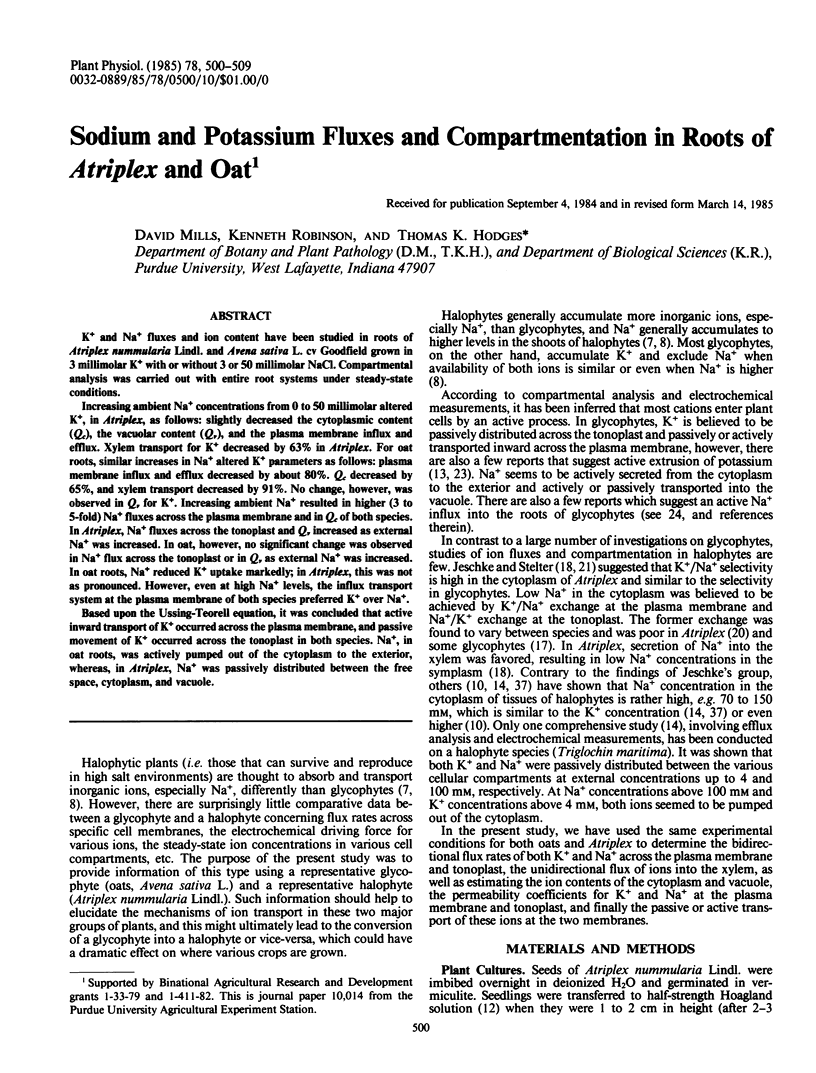
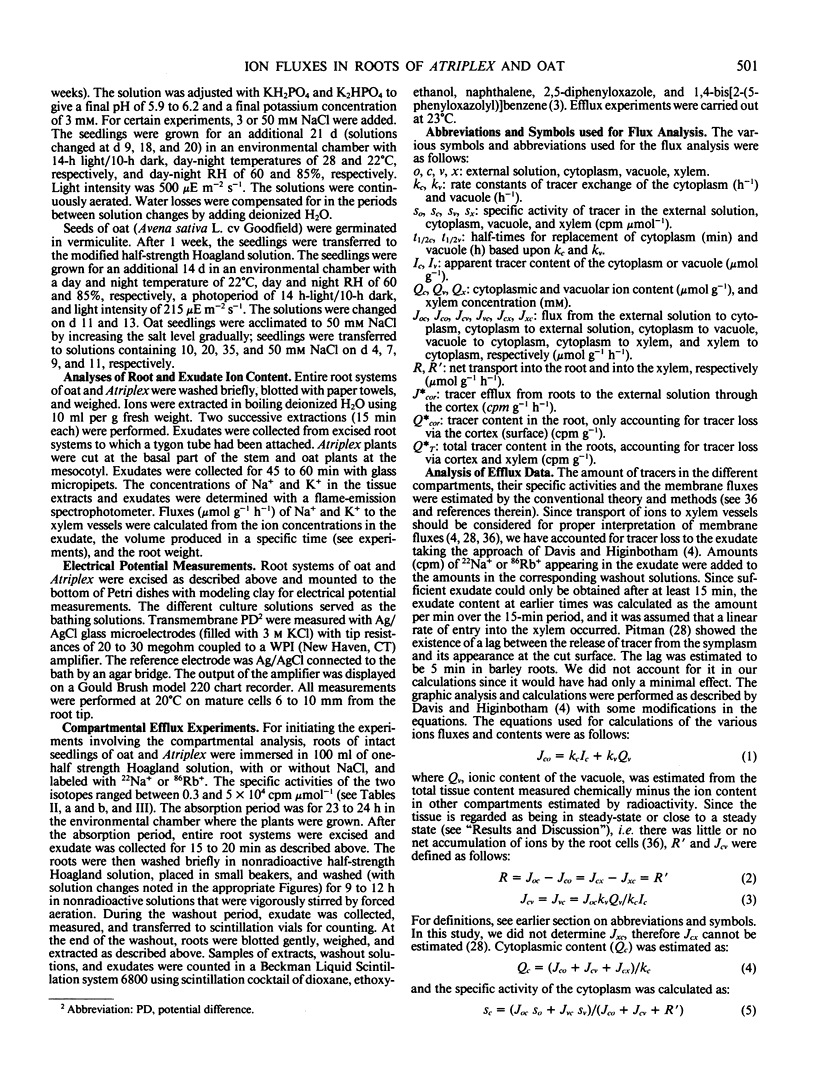
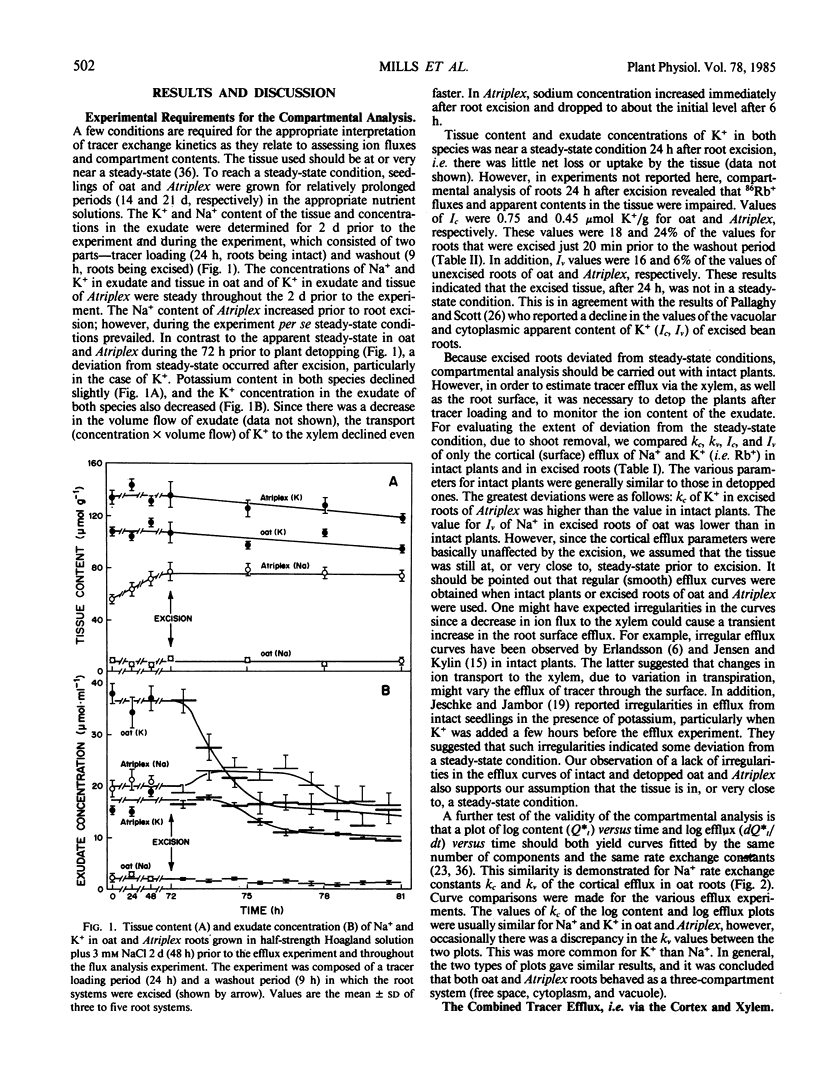
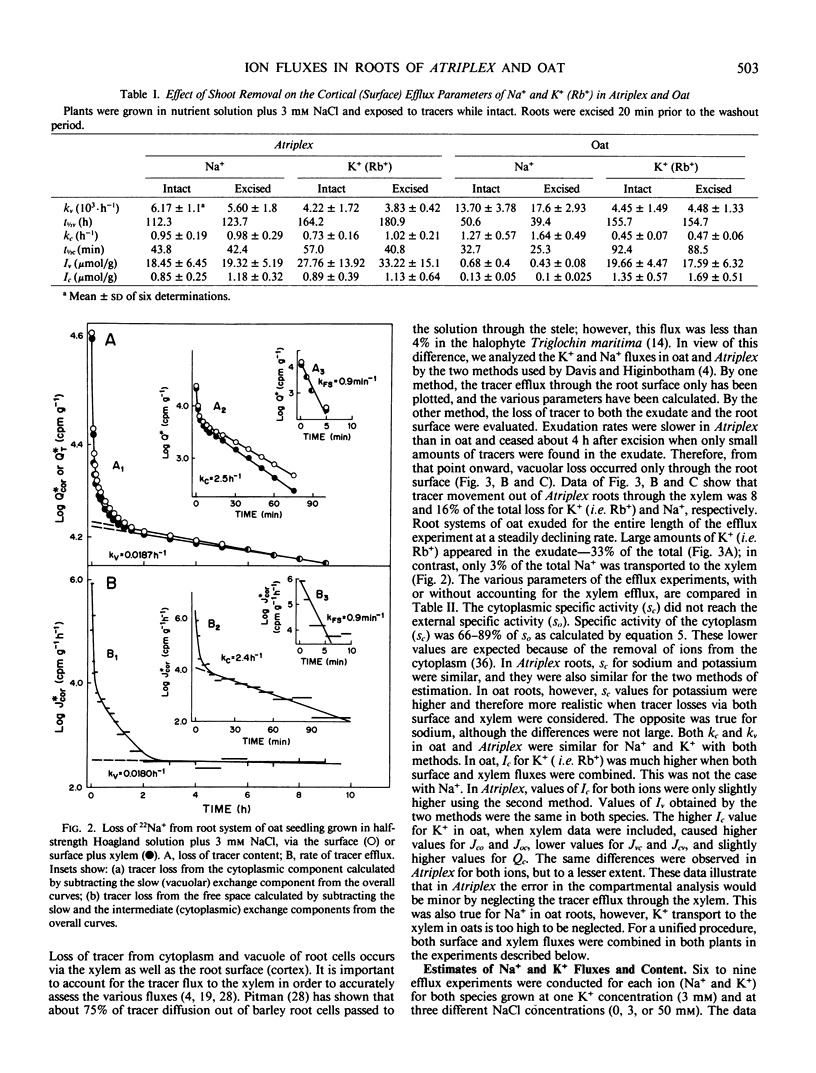
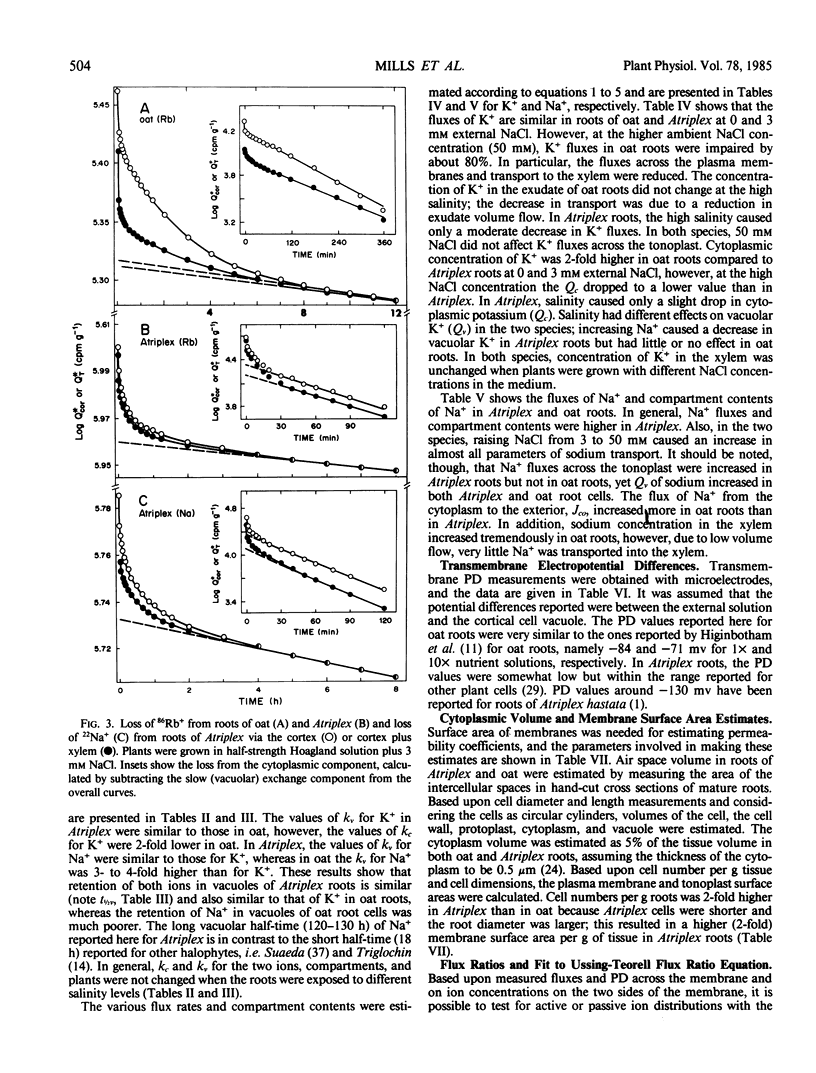
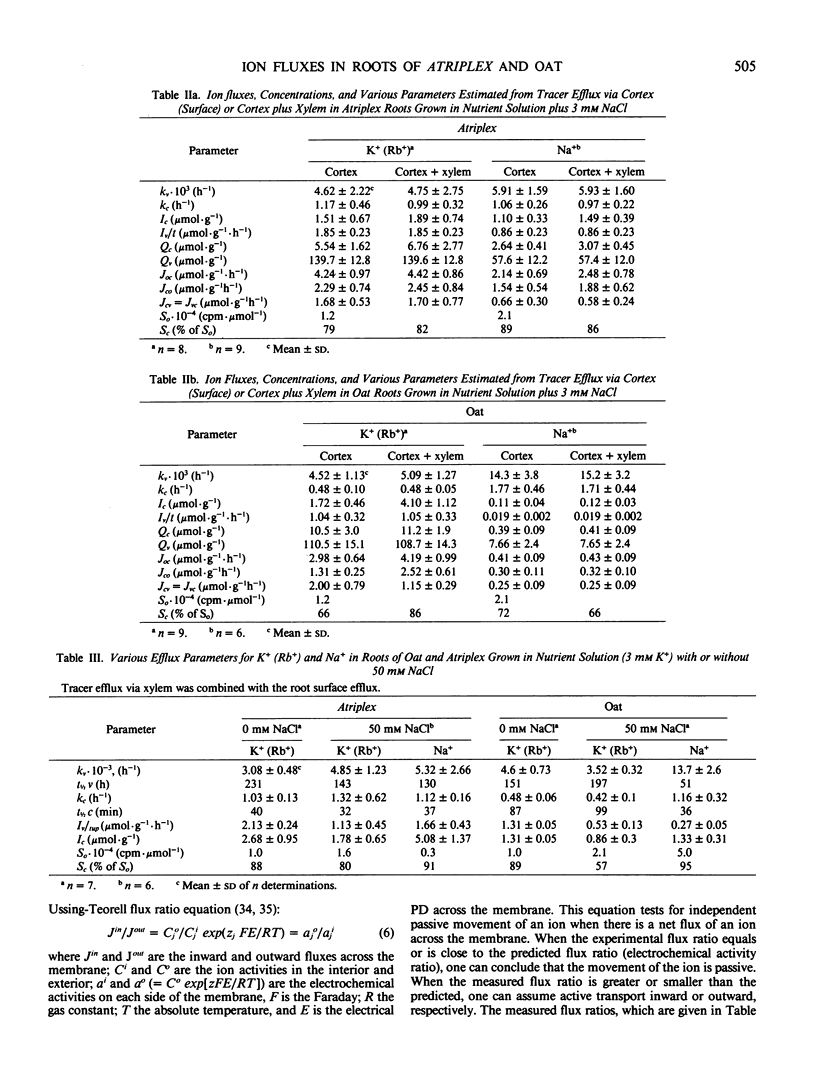
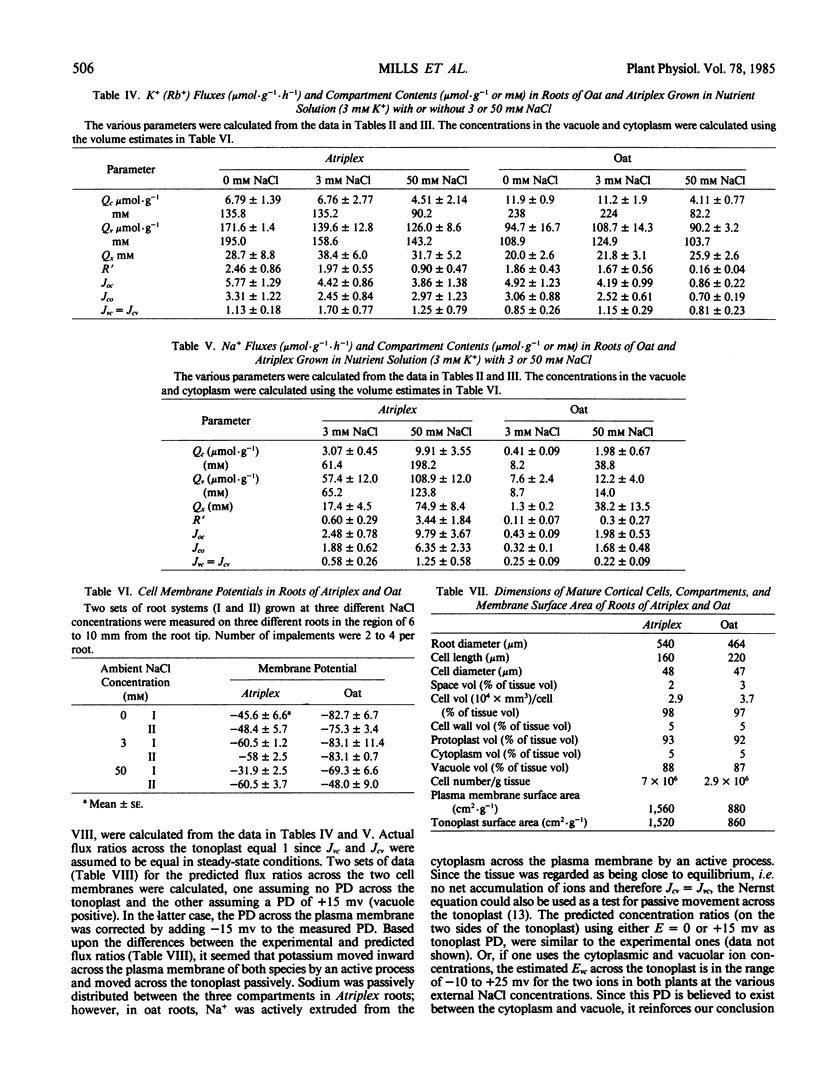

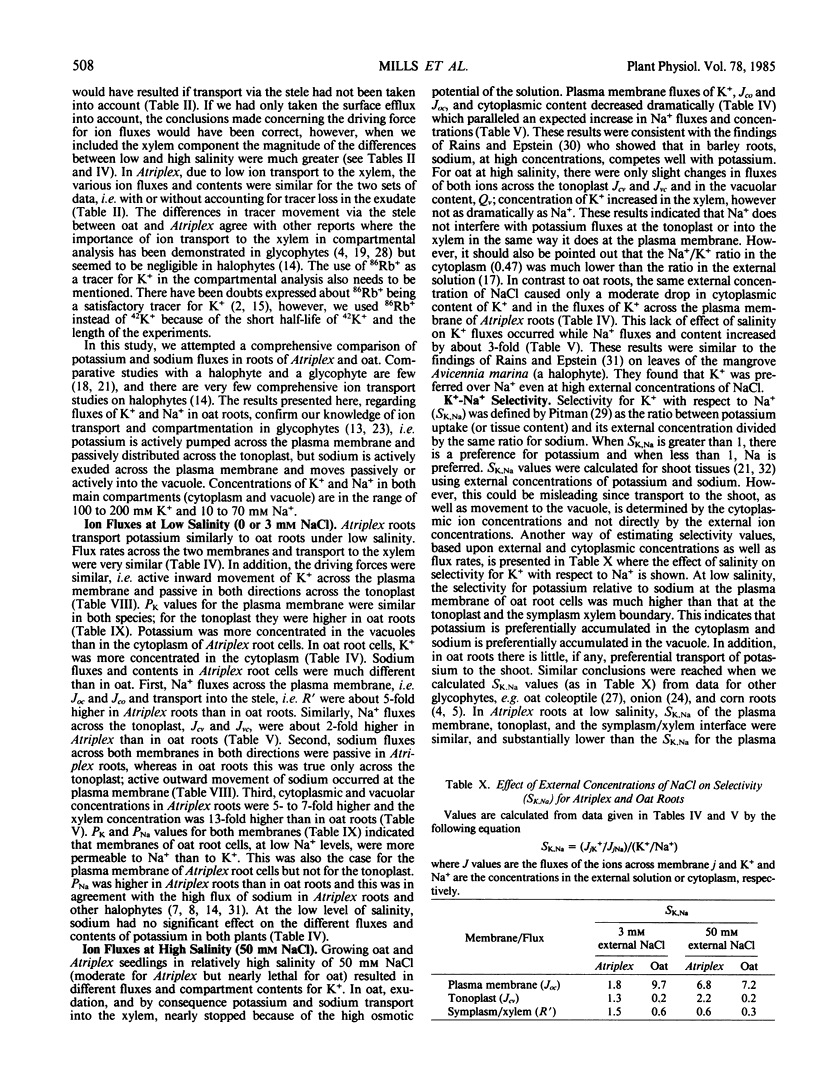
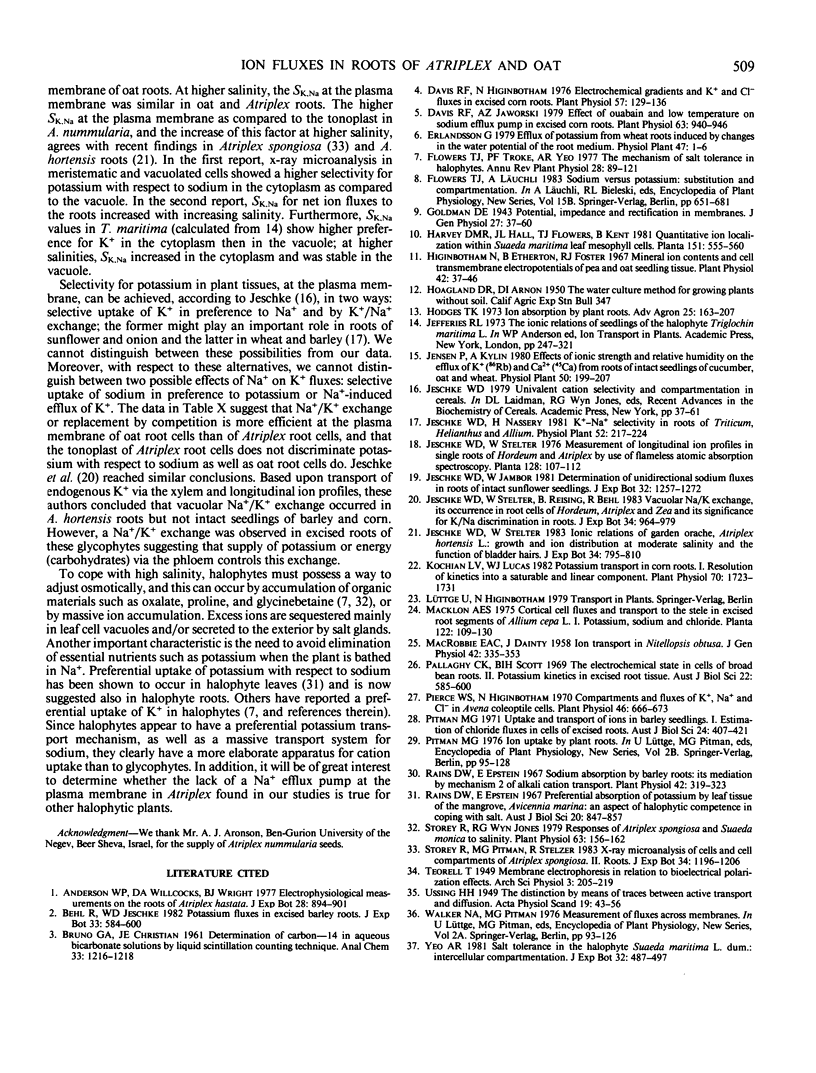
Selected References
These references are in PubMed. This may not be the complete list of references from this article.
- Davis R. F., Higinbotham N. Electrochemical gradients and k and cl fluxes in excised corn roots. Plant Physiol. 1976 Feb;57(2):129–136. doi: 10.1104/pp.57.2.129. [DOI] [PMC free article] [PubMed] [Google Scholar]
- Davis R. F., Jaworski A. Z. Effects of ouabain and low temperature on the sodium efflux pump in excised corn roots. Plant Physiol. 1979 May;63(5):940–946. doi: 10.1104/pp.63.5.940. [DOI] [PMC free article] [PubMed] [Google Scholar]
- Higinbotham N., Etherton B., Foster R. J. Mineral ion contents and cell transmembrane electropotentials of pea and oat seedling tissue. Plant Physiol. 1967 Jan;42(1):37–46. doi: 10.1104/pp.42.1.37. [DOI] [PMC free article] [PubMed] [Google Scholar]
- Kochian L. V., Lucas W. J. Potassium transport in corn roots : I. Resolution of kinetics into a saturable and linear component. Plant Physiol. 1982 Dec;70(6):1723–1731. doi: 10.1104/pp.70.6.1723. [DOI] [PMC free article] [PubMed] [Google Scholar]
- MACROBBIE E. A., DAINTY J. Ion transport in Nitellopsis obtusa. J Gen Physiol. 1958 Nov 20;42(2):335–353. doi: 10.1085/jgp.42.2.335. [DOI] [PMC free article] [PubMed] [Google Scholar]
- Pierce W. S., Higinbotham N. Compartments and Fluxes of K, NA, and CL in Avena Coleoptile Cells. Plant Physiol. 1970 Nov;46(5):666–673. doi: 10.1104/pp.46.5.666. [DOI] [PMC free article] [PubMed] [Google Scholar]
- Rains D. W., Epstein E. Sodium absorption by barley roots: its mediation by mechanism 2 of alkali cation transport. Plant Physiol. 1967 Mar;42(3):319–323. doi: 10.1104/pp.42.3.319. [DOI] [PMC free article] [PubMed] [Google Scholar]
- Storey R., Jones R. G. Responses of Atriplex spongiosa and Suaeda monoica to Salinity. Plant Physiol. 1979 Jan;63(1):156–162. doi: 10.1104/pp.63.1.156. [DOI] [PMC free article] [PubMed] [Google Scholar]


